Dinosaurs have always been a source of fascination for people of all ages. These prehistoric creatures were some of the largest and most incredible animals to ever walk the earth. From the tiny Velociraptor to the massive Argentinosaurus, dinosaurs came in all shapes and sizes.
In this article, we will be taking a look at the top 10 world’s largest dinosaurs ever. These massive creatures weighed tens of tons and grew over 100 feet long. We’ll explore what made each of these majestic creatures unique and what we know about them based on the fossils that have been discovered.
You are reading: Top 10 Worlds Largest Dinosaurs Ever
So, let’s dive into the world of the largest dinosaurs ever found!
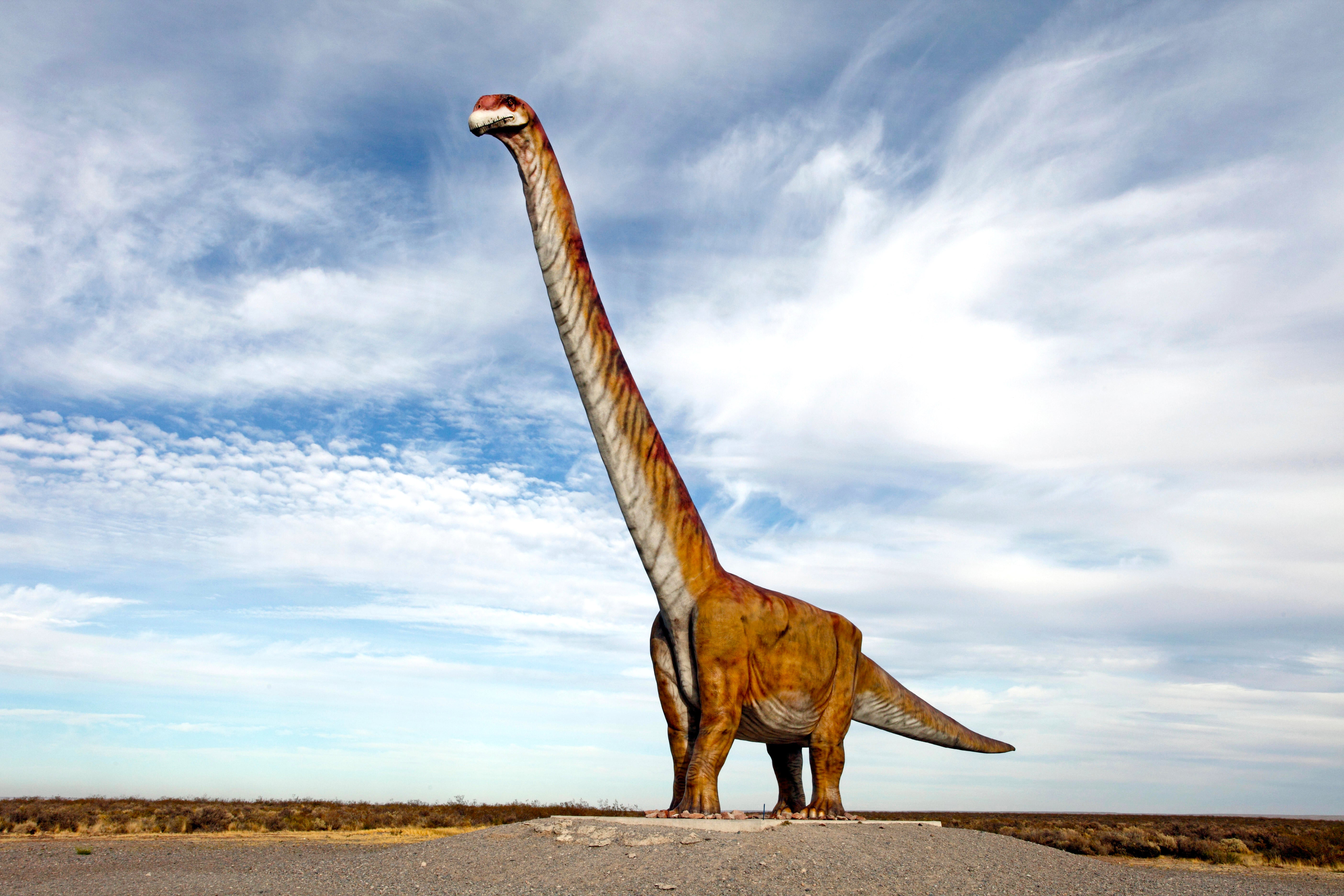
Top 10 World’s Largest Dinosaurs Ever
Supersaurus
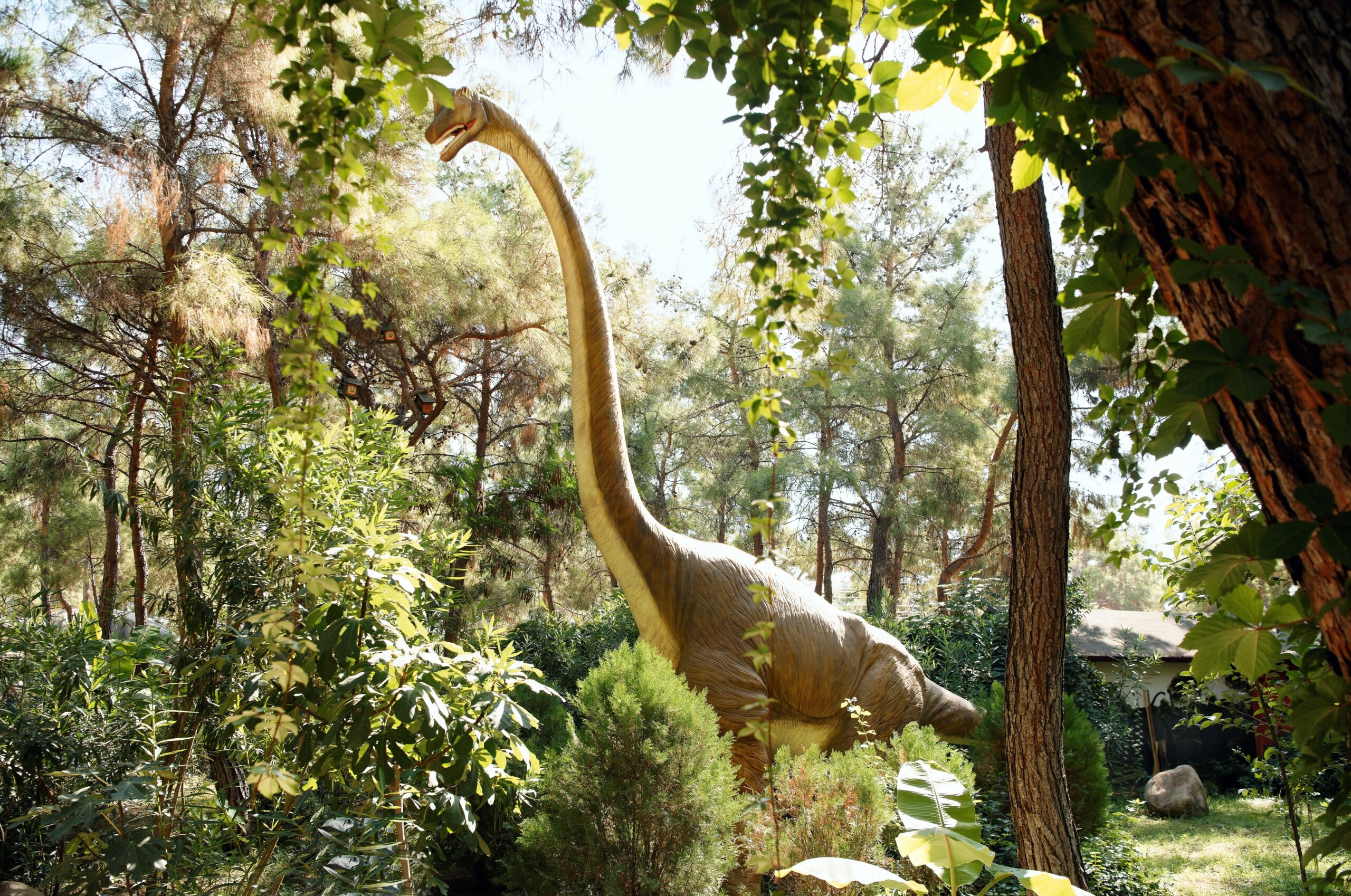
Supersaurus is a genus of diplodocid sauropod dinosaur that lived in North America during the Late Jurassic period, between 153 to 145 million years ago. The type species, S. vivianae, was first discovered by Vivian Jones of Delta, Colorado, in the middle Morrison Formation of Colorado in 1972.
Supersaurus was a massive herbivore with an elongated neck and tail, and it is estimated to have grown between 105 to 138 feet long. The fossil remains of Supersaurus were found in the Brushy Basin Member of the formation.
The more complete specimen, WDC DMJ-021, was assigned to Supersaurus and suggests that it was very similar in anatomy to Apatosaurus but less robustly built with especially elongated cervical vertebrae, resulting in one of the longest known sauropod necks.
Supersaurus belongs to the family Diplodocidae, which includes some of the longest dinosaurs ever discovered.
Maraapunisaurus
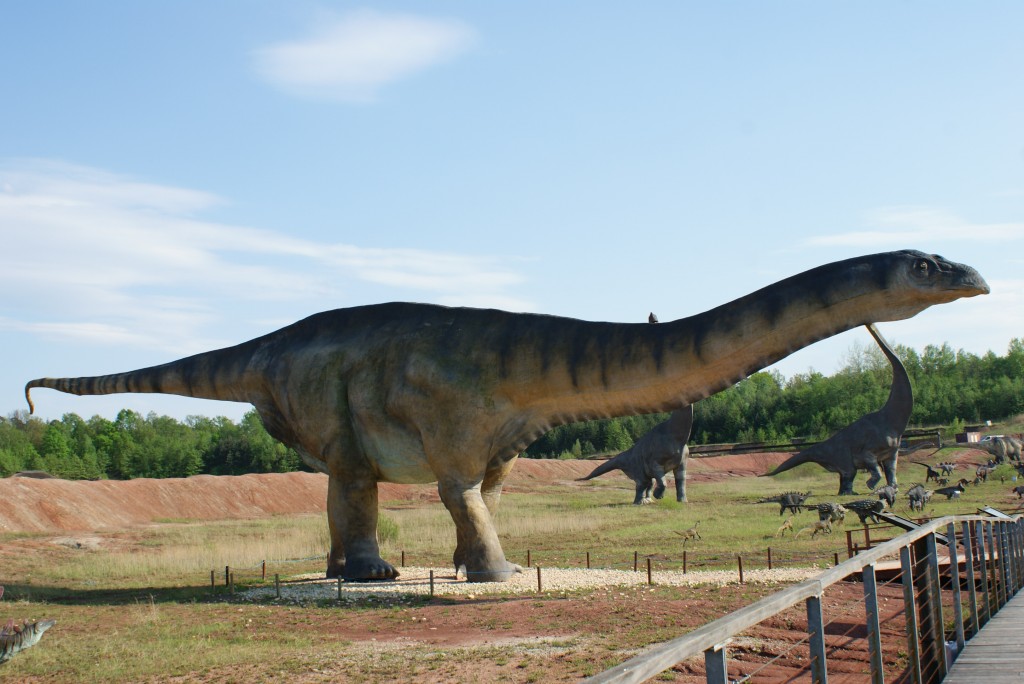
Maraapunisaurus is a genus of sauropod dinosaur that lived during the Late Jurassic period in western North America. It was originally named Amphicoelias fragillimus, and it has sometimes been estimated to be the largest dinosaur specimen ever discovered, although this is still a matter of debate among scientists.
The genus is known only from a single fossil bone, a dorsal vertebra, which was discovered by Edward Drinker Cope in the Morrison Formation of Colorado in 1878. The vertebra is estimated to be around 1.5 meters tall and is one of the largest dinosaur bones ever discovered.
Based on this bone, scientists have produced numerous size estimates over the years, with the largest estimate suggesting that Maraapunisaurus could have been up to 131 feet long.
However, the lack of additional fossils makes it difficult to determine the exact size and characteristics of this dinosaur. Maraapunisaurus belongs to the family Rebbachisauridae, which includes other long-necked sauropods such as Nigersaurus and Limaysaurus.
Argentinosaurus

Argentinosaurus is a genus of giant sauropod dinosaur that lived during the Late Cretaceous period in what is now Argentina. Although it is only known from fragmentary remains, Argentinosaurus is one of the largest known land animals of all time, perhaps the largest, measuring 30–35 meters (98–115 ft) long and weighing 65–80 tonnes (72–88 short tons) .
It was a member of Titanosauria, the dominant group of sauropods during the Cretaceous. The exact size of Argentinosaurus is hard to estimate due to the incompleteness of its fossilized remains, but it is believed to be one of the largest land animals ever found.
Argentinosaurus probably used its long neck to sweep the ground or to reach high up in search of vegetation, and it was a herbivore that lived in a terrestrial habitat.
The hatchlings of Argentinosaurus would have taken 15 years to grow to adulthood and in that time they would have been very vulnerable to predators, such as the large theropod dinosaur Giganotosaurus.
Patagotitan
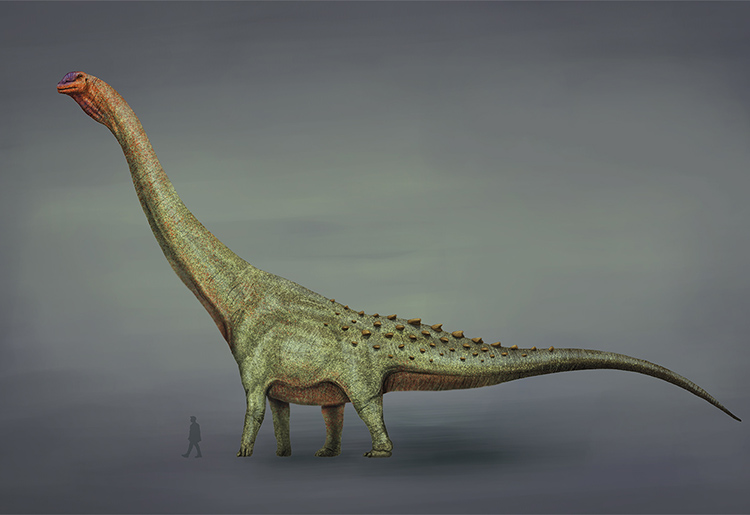
Patagotitan is a genus of titanosaurian sauropod dinosaur that lived during the Early Cretaceous period in what is now Argentina. It was first announced in 2014 and then named in 2017 by José Carballido and colleagues.
Read more : The Top 8 Best Orange Freshwater Fish Perfect For Aquariums
The genus contains a single species known from at least six young adult individuals, Patagotitan mayorum. Patagotitan is one of the largest known dinosaurs, making it also one of the largest land animals ever found. Its thigh bone (femur) alone was 2.38 meters long.
The exact size of Patagotitan is hard to estimate due to the incompleteness of its fossilized remains, but it is believed to have been between 102-121 feet long and weighed between 65-80 tonnes.
Patagotitan was a particularly large and robust titanosaur and can be distinguished from its close relatives by a suite of unique characteristics in its back and tail vertebrae, scapulae and humeri in the forelimb, and ischia and femora in the hindlimb.
The discovery of Patagotitan sheds light on body mass evolution among sauropod dinosaurs.
Barosaurus
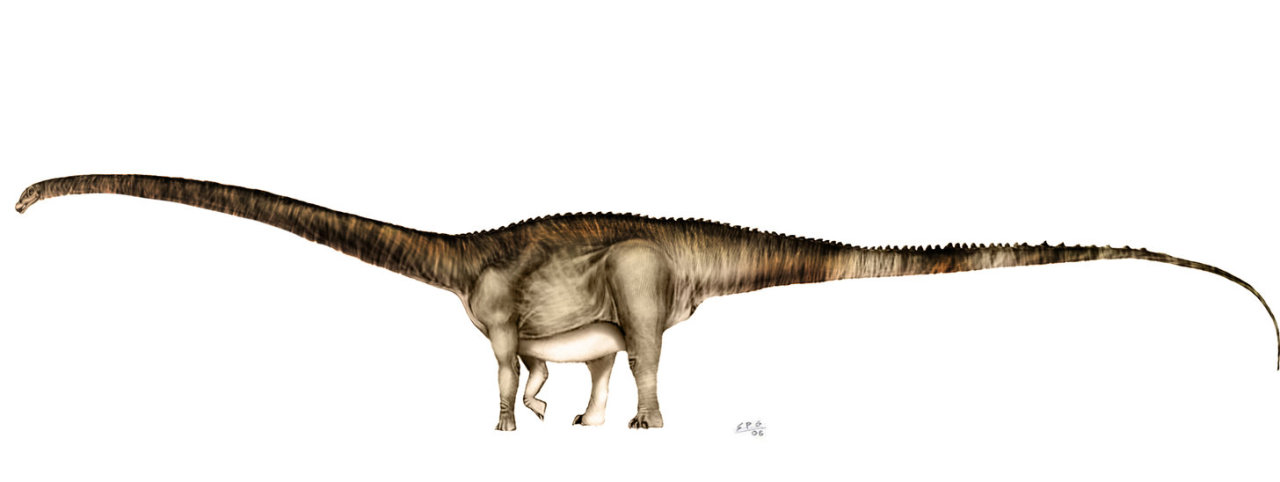
Barosaurus was a giant, long-tailed, long-necked, plant-eating sauropod dinosaur that lived during the Late Jurassic period, around 150 million years ago. It was closely related to Diplodocus and its remains have been found in the Morrison Formation from the Upper Jurassic Period of Utah and South Dakota.
Barosaurus was one of the largest dinosaurs to ever walk the earth, reaching an enormous adult size. Its elongated neck and tail were characteristic features of the sauropod group, and it was a herbivore that lived in North America.
Barosaurus is the least common of all the sauropods found in the Carnegie Quarry. The exact size of Barosaurus is difficult to estimate due to the incompleteness of its fossilized remains, but it is believed to have been one of the longest known sauropod dinosaurs.
Despite its size, Barosaurus was relatively light for its length, with a relatively small head and a long, slender neck.
Sauroposeidon
Sauroposeidon is a genus of sauropod dinosaur that lived during the Cretaceous period in what is now North America. Several incomplete specimens, including a bone bed and fossilized trackways, have been found in the U.S. states of Oklahoma, Wyoming, and Texas.
Sauroposeidon was a herbivore, and it is estimated to have weighed between 40-60 tonnes (44-66 short tons). The neck length of Sauroposeidon is estimated at 11.25-12 meters (37-39 feet), making it one of the longest-necked dinosaurs ever discovered.
It is believed that Sauroposeidon was able to raise its head up to 16.5-18 meters (54-59 feet) above the ground, which is as high as a six-story building. The mass of Sauroposeidon is estimated to be similar to that of other giant sauropods such as Argentinosaurus and Patagotitan.
While the vertebrae of Sauroposeidon are longer than those of Giraffatitan, they are only slightly larger in diameter. Sauroposeidon belongs to the family Titanosauria, which includes some of the largest dinosaurs ever discovered.
Alamosaurus
Alamosaurus is a genus of titanosaurian sauropod dinosaur that lived during the Late Cretaceous period in what is now southern North America. It is the only known sauropod to have inhabited North America after their nearly 30-million year absence from the North American fossil record, and probably represents an immigrant from South America.
The type species, Alamosaurus sanjuanensis, was first discovered in the Ojo Alamo Formation of New Mexico in 1922. Alamosaurus was a gigantic quadrupedal herbivore with a long neck and tail and relatively long limbs. Its body was at least partly covered in bony armor.
The exact size of Alamosaurus is difficult to estimate due to the incompleteness of its fossilized remains, but it is believed to have been one of the largest dinosaurs known from North America, reaching lengths of at least 30 meters (98 ft) and weighing between 72.5-80 tonnes (80-88 short tons).
Alamosaurus was a member of the sauropod dinosaur lineage, which includes some of the largest land animals ever to evolve.
Brachiosaurus
Brachiosaurus is a genus of sauropod dinosaur that lived during the Late Jurassic period, between 154 to 150 million years ago. It was first described by American paleontologist Elmer S. Riggs in 1903 from fossils found in the Colorado River valley in western Colorado, United States.
Brachiosaurus was one of the heaviest and tallest sauropod dinosaurs for which complete skeletons exist. It was built like a huge giraffe, with an immensely long neck and relatively short tail.
Its forelimbs were longer than its hind limbs, which allowed it to lift its head to about 12 meters (39 feet) above the ground in order to browse the branches of tall trees. Brachiosaurus attained a maximum length approaching 25 meters (82 feet) and a weight of nearly 80 metric tons (88 short tons).
The exact size of Brachiosaurus is difficult to estimate due to the incompleteness of its fossilized remains, but it is believed to have been one of the longest known sauropod dinosaurs.
Read more : Discover 5 Animals That Lurk Atop Texas’s Tallest Mountain
Brachiosaurus was a herbivore that lived in North America, and its fossils have been found in Africa and Europe as well.
Dreadnoughtus
Dreadnoughtus is a genus of titanosaurian sauropod dinosaur that lived in South America during the Late Cretaceous period. It is the most complete titanosaurian dinosaur ever found, with over 70% of its skeleton recovered.
Dreadnoughtus was first discovered in 2005 by a team of paleontologists led by Kenneth Lacovara in the Cerro Fortaleza Formation of southern Patagonia, Argentina. The genus contains a single species, Dreadnoughtus schrani, which was named in 2014.
Dreadnoughtus is estimated to have been one of the largest land animals that ever lived, with a total length of roughly 26 meters (about 85 feet) and an estimated mass of 59 metric tons (about 65 tons).
Dreadnoughtus was a herbivore that stood 9 meters (30 feet) tall and likely used its 11-meter (37-foot) neck to reach leaves high up on trees. The name Dreadnoughtus means “fears nothing,” which refers to the gigantic body size of the taxon that presumably rendered healthy adult individuals nearly impervious to attack.
Dreadnoughtus belongs to the family Titanosauria, which includes some of the largest dinosaurs ever discovered.
Futalognkosaurus
Futalognkosaurus is a genus of titanosaurian dinosaur that lived approximately 87 million years ago in what is now Argentina, during the late Cretaceous period.
The name Futalognkosaurus means “giant chief lizard”. It was a herbivorous dinosaur that belonged to the clade Lognkosauria.
Futalognkosaurus was one of the giant dinosaurs living during the late Cretaceous period, measuring at about 26–30 meters (85-98 feet) long. Its fossils were discovered in the Neuquén province of Argentina in 2000 and were scientifically described in 2007.
The holotype of Futalognkosaurus was found near the margins of a river and was hypothesized to have been washed into the river after its death. Fossils of Futalognkosaurus were found alongside other dinosaur remains, such as Megaraptor, Unenlagia, iguanodonts, peirosaurids, and pterosaurs.
The fish and fossilized leaf debris on the site, together with other dinosaur remains, suggest a warm tropical climate in Patagonia during this period.
Besides Futalognkosaurus, other fauna was also found in the Portezuelo Formation, such as the colossal Puertasaurus, which may be the biggest dinosaur known so far.
Futalognkosaurus was one of the most complete titanosaurian dinosaurs ever found, with over 70% of its skeleton recovered.
Futalognkosaurus was a sauropod dinosaur, which is a group of long-necked, herbivorous dinosaurs that were some of the largest animals to ever walk the earth.
Overall, Futalognkosaurus was a massive dinosaur that roamed the earth during the late Cretaceous period in what is now Argentina. Its discovery has shed light on the diversity of sauropod dinosaurs during this time period.
FAQS
1. What is the largest dinosaur ever discovered?
The largest dinosaur ever discovered is currently thought to be Argentinosaurus, which was estimated to be up to 115 feet long and weigh up to 80 tons.
2. What is the smallest dinosaur ever discovered?
The smallest dinosaur ever discovered is thought to be the bee hummingbird, which is about 2.25 inches long.
3. What is the difference between a sauropod and a theropod?
Sauropods were long-necked, herbivorous dinosaurs with four legs, while theropods were bipedal, carnivorous dinosaurs with sharp teeth and claws.
4. How do scientists estimate the size of dinosaurs?
Scientists estimate the size of dinosaurs based on the size and shape of their bones, as well as comparisons to other known dinosaur species.
5. Where have the largest dinosaur fossils been found?
Many of the largest dinosaur fossils have been found in South America, particularly in Argentina and Brazil.
6. What did the largest dinosaurs eat?
The largest dinosaurs were herbivores, and they likely ate large amounts of vegetation to sustain their massive bodies.
7. How did the largest dinosaurs move around?
The largest dinosaurs were quadrupedal, meaning they walked on four legs. Some, like sauropods, had elongated necks and tails that helped them balance and move around.
Source: https://petstutorial.com
Category: Animals










